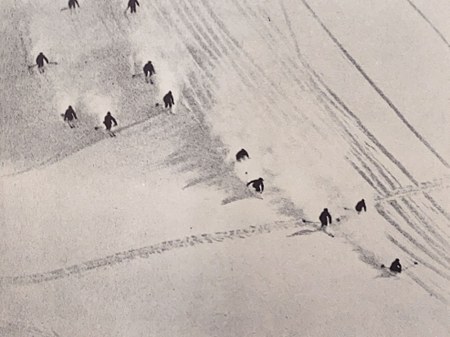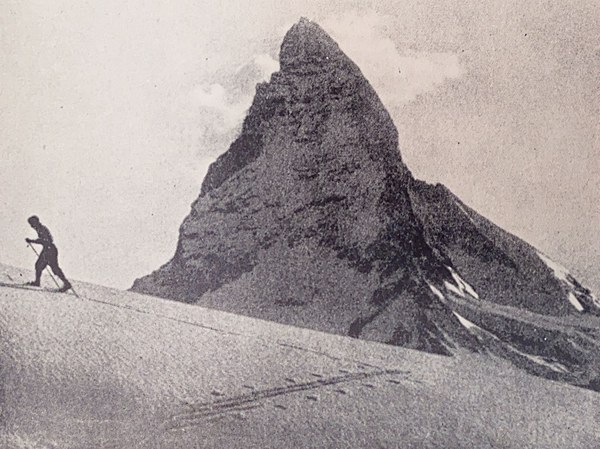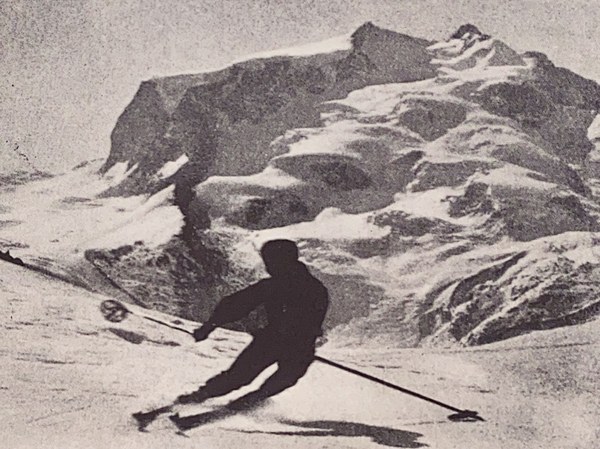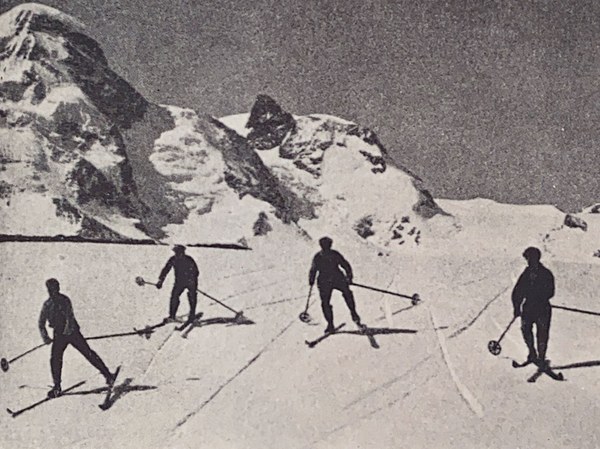
Long before beacons, Gore-Tex, groomers, or even the assurance of a good helmet: Mountaineers were on skis. They were a curious group, dressed in thick wool, without the ability to check snow conditions or rest their tired legs on a chair lift between laps. Still, they remained eager, stubborn, and terribly enthusiastic about the variable winter season. With keen interest and experimentation, these skiers unknowingly laid the groundwork for generations of powder hounds to come.
From snowshoe to ski at Lodge Lake
The Mountaineers first rooted at Snoqualmie Pass in 1915, building a rustic lodge that would become a home base for members at Lodge Lake. Summers were spent venturing great distances into the Cascade Range, but, as seasons changed, so did accessibility. To counter winter’s challenging and often unpredictable conditions, Mountaineers began exploring with snowshoes. Snowshoes successfully aided winter travel, but the sport didn’t tend to members' persistent itch for speed and adrenaline.
In the early 1920s, skis were first introduced at Lodge Lake. The typical ski was made of hickory and had the long, narrow shape that we recognize today. Originally, Mountaineers lacked knowledge and training, so equipment was reserved for members who had learned to ski elsewhere. Nonetheless, when members were keen to learn, others were happy to teach, and soon the demand for skiing grew exponentially until, according to the 1929 Mountaineer Annual, “snowshoes became as rare at the lodge as had been the ski but a few years before.”
Access to skis broke open new possibilities for Mountaineers. “Old acquaintances of summer days, peaks, and mountain parks, could be renewed in winter months on skis.” Winter play was no longer limited, arduous, or inaccessible. Deep terrain became reachable, snow became a resource, and members’ outdoor efforts could continue through conditions that once confined them. For a group whose mission is to explore, conserve, learn about, and enjoy the lands and waters of the Pacific Northwest, skis sure set them on the right track.
Now, all they needed was the proper gear.
 A Mountaineer skiing uphill.
A Mountaineer skiing uphill.
Equipment
Within the greater group of Mountaineers skiers, “a smaller nucleus [formed] to whom proper technique and correct equipment was of paramount importance.” This nucleus was committed to furthering skiing at Snoqualmie Pass through detailed reading and experimentation. They were the original gear heads, if you will - testing equipment from foreign catalogs against local conditions, researching and criticizing Norwegian and American skis, analyzing books on technique, and putting all their new toys and knowledge into practice on the slopes.
Results from these experiments were shared in the 1929 Annual, offering new skiers detailed instructions on gear selection. Some ideas are still in practice today: “ski boots are indispensable,” “outer clothing should be windproof,” “mitts are of vital importance.” Other ideas were, let’s say, appropriate for the time: “a cap with a brim is the most protective headwear, wool is better than goat hair and goat hair is better than camel, the average ski should be seven feet long.”
No matter the specifics, some items were absolutely required to ski with The Mountaineers. Among them were things like seal skins, spare ski tips, candles, an avalanche cord, a waxing iron, and, of course, wax. Members took years to edit this equipment list to their liking. They had many successes and many failures, but when something didn’t work they kept on, reminded that “the ancients used dried fish [for wax], so they can do no less than try anything.”
Stores in the city kept score on the suggestions of Mountaineers skiers, adjusting their inventory accordingly. This gave newer skiers an advantage, as they didn’t have to endure the same trial and error of early members. Purchases could be made with confidence “that the articles are correct and best suited to the kind of skiing afforded in the Pacific Northwest.”
As such, the learning curve began to settle and beginners were no longer content “merely being able to negotiate a straight run and remain standing.” Skiers of all skill levels wanted more and committed to learning the proper techniques for progression and excellency.
 A Mountaineer practicing a swing turn.
A Mountaineer practicing a swing turn.
Technique
Clothed in protective gear, Mountaineers tested fundamental, European techniques, such as skating, swing turns, and side-stepping. “For the first time, proper technique commenced to be appreciated and sought after,” which greatly affected members' learning and potential.
A crucial element of downhill skiing is, in fact, being on top of a hill. Without the invention of chair lifts to aid in their ascent, members needed a way to climb on snow. Skiers glued seal skins to the bottom of their skis, whose angled hairs would stick in the snow, creating grip and preventing the skier from sliding backward. Once skiers had successfully climbed uphill, they would remove their seal skins before taking smooth, swing turns back down.
The downhill was where members bested or burned. Most Mountaineers took years to skillfully maneuver on skis. These members didn’t make headlines, but they did engage with the humble and worthy pursuit of learning.
Among these beginners were experts who “performed on long sticks in such a way as to give a whole new understanding of the possibilities of the sport.” These members excelled quickly, skiing with ease down steep slopes, navigating uncertain snow conditions, and even dominating annual club races. Their skill brought them to Silver Peak, Lost Lake, and other Snoqualmie Pass regions “of never-failing interest.”
The Pacific Northwest held great potential for ski mountaineering. Unlike the snowshoe, flat and waxed skis contributed to efficient, productive exploration of local regions. The perpetual thrill of discovery encouraged members to enter terrain that had previously been unknown to them in winter months. “The steep slopes, the sudden rises and depressions, the twisting, bewildering runs through the timber” were all unearthed.
 Mountaineers skate skiing.
Mountaineers skate skiing.
A lasting ski legacy
Early Mountaineers skiers, through ongoing product experimentation and development of technique, raised the standard of skiing. This group’s fervent desire to progress instilled a prominence for The Mountaineers within the Northwest ski scene. In the winter of 1927, skiing in Snoqualmie Pass “attained such popularity that the lodge, for the first time in history, was filled to overflowing many weekends through the height of the ski season.” To counter this growing enthusiasm, The Mountaineers Ski Committee was named and made responsible for leadership and management. The Ski Committee has since expanded, but the mission is the same: to support members' involvement in the local ski landscape; an industry that hasn’t stopped advancing since the early 1920s.
This article originally appeared in our winter 2024 issue of Mountaineer magazine. To view the original article in magazine form and read more stories from our publication, visit our magazine archive.
 Bayley Stejer
Bayley Stejer